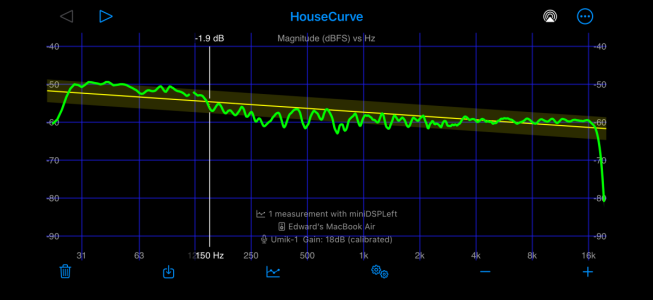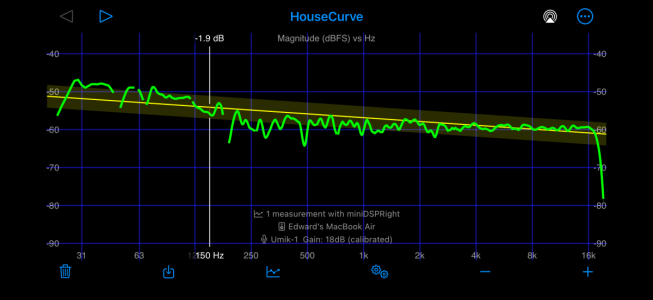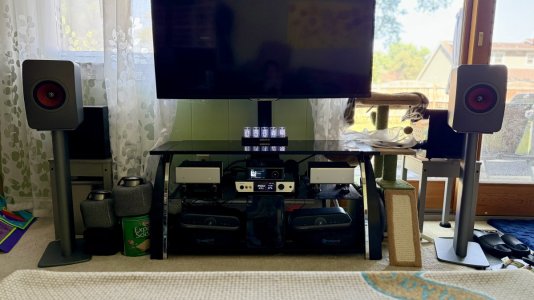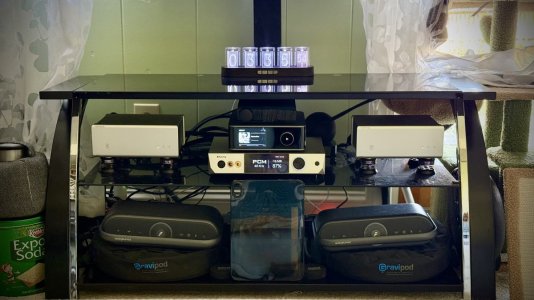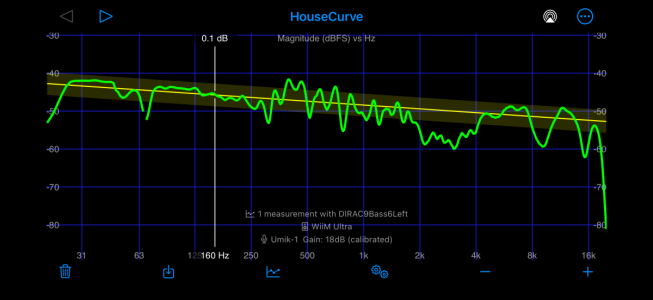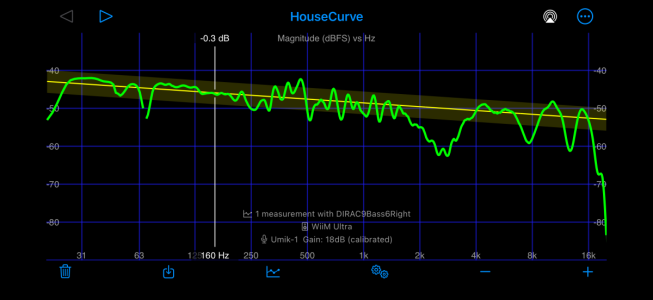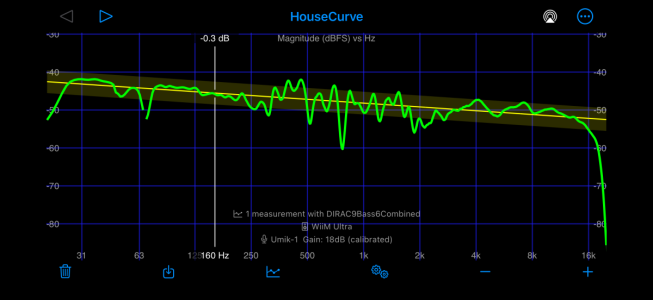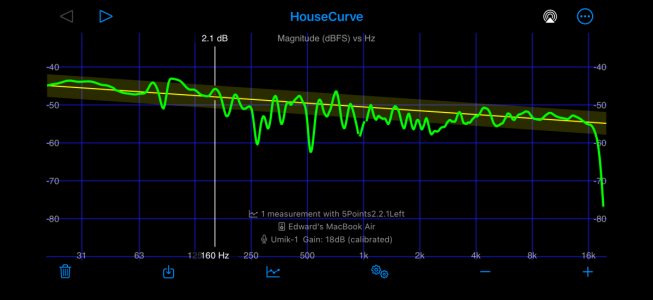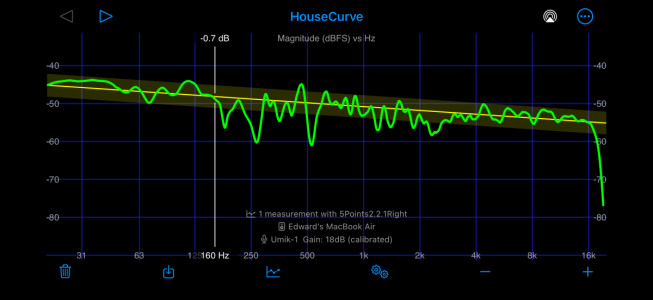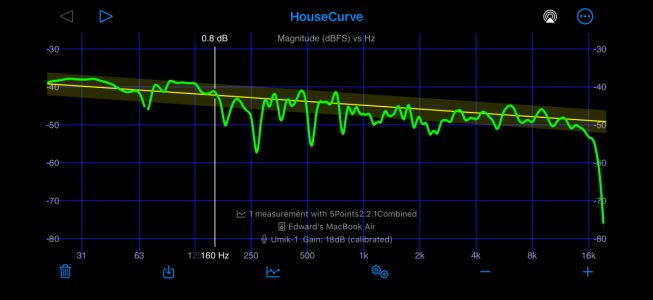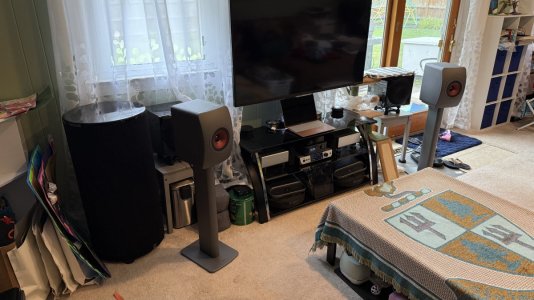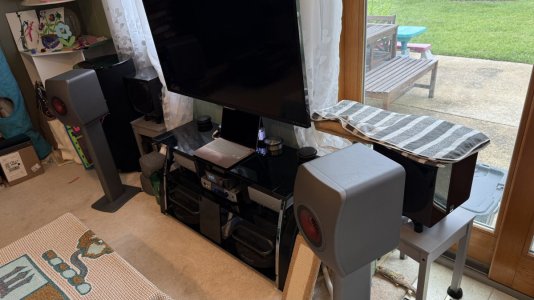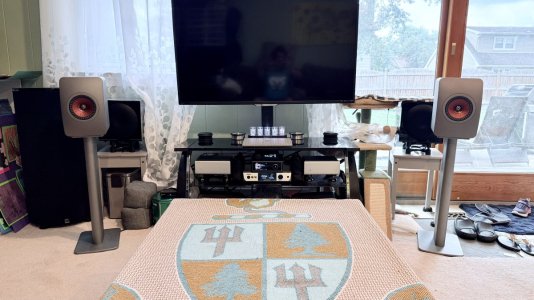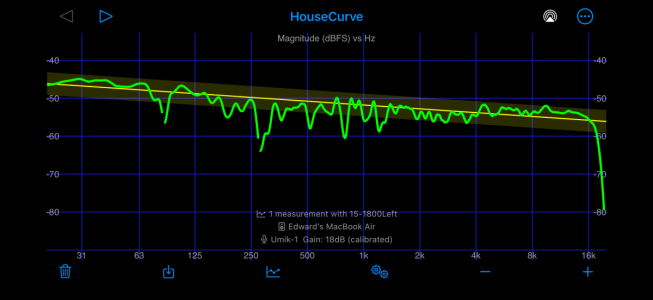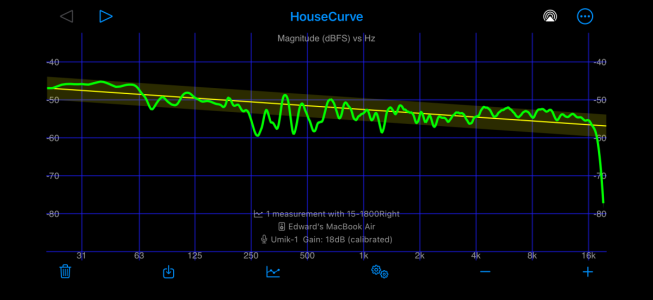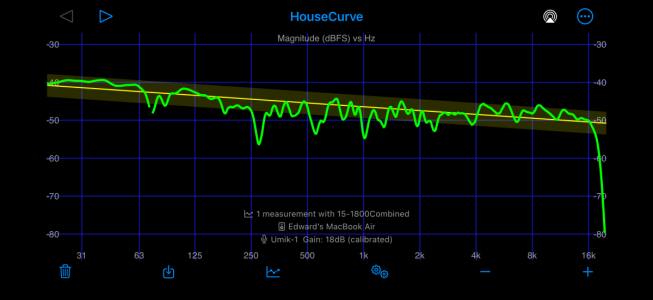I don't see you mention it, and you were obviously focusing on other aspects of your setup, but...I picked up a WiiM Pro Plus overnight via Amazon and set it up into my system. I have adjusted the setup as such:
Disconnected Topping D90 III Discrete from the DSPeaker Anti-Mode X2D's digital output and connected it to the WiiM Ultra's digital output (coax)
Disconnected the SVS 3000-Micro's LFE connection from the Anti-Mode X2D
Disconnected Anti-Mode X2D from WiiM Ultra, connected it to the WiiM Pro Plus, connected an SMSL SU-1 DAC to the X2D's output, connected the sub to the SU-1 in stereo RCA, reran room correction calibration.
Added the WiiM Pro Plus to my network, synced the included remote, set up a, "multiroom," group (well, it's the same room) with the WiiM Ultra
Turned on the High-Pass filter on the WiiM Ultra
Set the Low-Pass filter on the subwoofer to match
Used HouseCurve to level match the sub to the speakers
So far so good, sounds at least as good as before, if not better (the SU-1 is a better DAC than whatever is driving the LFE output of the Anti-Mode X2D). Surprising how easy it was to get the speakers and the sub aligned (just used HouseCurve to run repeated sweeps as I adjusted the phase setting in the SVS app).
I haven't had a chance to test lip sync yet with ARC input; will try later and come back. If it all works, I'm basically ready to add the second sub as soon as I can source a used/open box one in good condition for a decent price, and all I'd have to do is rerun the room calibration on the X2D, which is currently set to 0.2 mode.
-Ed
You not only had left and right separated between two streamers and dacs, but also by two different brands of dac chips - AKM and ESS.
Did you notice any difference in coloration or presentation - left to right??


